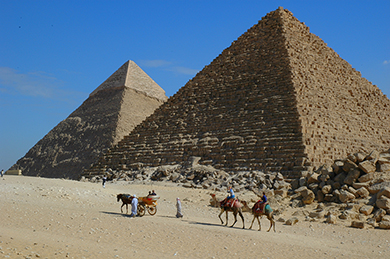| << Chapter < Page | Chapter >> Page > |
By the end of this section, you will be able to:
Think about what a complex system a modern economy is. It includes all production of goods and services, all buying and selling, all employment. The economic life of every individual is interrelated, at least to a small extent, with the economic lives of thousands or even millions of other individuals. Who organizes and coordinates this system? Who insures that, for example, the number of televisions a society provides is the same as the amount it needs and wants? Who insures that the right number of employees work in the electronics industry? Who insures that televisions are produced in the best way possible? How does it all get done?
There are at least three ways societies have found to organize an economy. The first is the traditional economy , which is the oldest economic system and can be found in parts of Asia, Africa, and South America. Traditional economies organize their economic affairs the way they have always done (i.e., tradition). Occupations stay in the family. Most families are farmers who grow the crops they have always grown using traditional methods. What you produce is what you get to consume. Because things are driven by tradition, there is little economic progress or development.

Command economies are very different. In a command economy , economic effort is devoted to goals passed down from a ruler or ruling class. Ancient Egypt was a good example: a large part of economic life was devoted to building pyramids, like those shown in [link] , for the pharaohs. Medieval manor life is another example: the lord provided the land for growing crops and protection in the event of war. In return, vassals provided labor and soldiers to do the lord’s bidding. In the last century, communism emphasized command economies.
In a command economy, the government decides what goods and services will be produced and what prices will be charged for them. The government decides what methods of production will be used and how much workers will be paid. Many necessities like healthcare and education are provided for free. Currently, Cuba and North Korea have command economies.

Although command economies have a very centralized structure for economic decisions, market economies have a very decentralized structure. A market is an institution that brings together buyers and sellers of goods or services, who may be either individuals or businesses. The New York Stock Exchange, shown in [link] , is a prime example of market in which buyers and sellers are brought together. In a market economy , decision-making is decentralized. Market economies are based on private enterprise : the means of production (resources and businesses) are owned and operated by private individuals or groups of private individuals. Businesses supply goods and services based on demand. (In a command economy, by contrast, resources and businesses are owned by the government.) What goods and services are supplied depends on what is demanded. A person’s income is based on his or her ability to convert resources (especially labor) into something that society values. The more society values the person’s output, the higher the income (think Lady Gaga or LeBron James). In this scenario, economic decisions are determined by market forces, not governments.

Notification Switch
Would you like to follow the 'Principles of economics' conversation and receive update notifications?